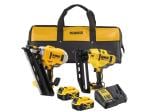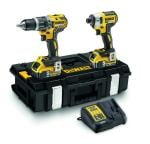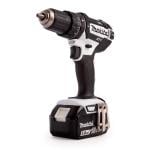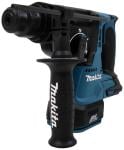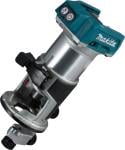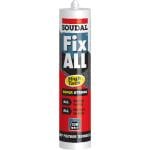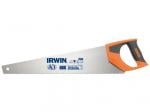The Different Types of Wood Joints (Named & Explained)
If you are new to woodworking, then you are likely feeling overwhelmed by the sheer amount of terminology that you are having to pick up.
One of the hardest parts is coming across terms that you are already familiar with, only with a different meaning, for example, edge, lap, butt, finger joints, and so on. In any case, you shouldn’t feel too intimidated.
With a little time, research, and practice, you’ll soon find yourself picking everything up and feeling your confidence grow as you get more practical experience.
In this article, we’re going to look at some of the basic types of wood joints, so that you can start building a better understanding of what’s in store for you as you progress in the world of woodworking.
1 – Butt Joint
A butt joint is when you connected two squared-off pieces of wood, whether that be face to face, edge to edge, or at a corner.
We’ve kicked this list off with the butt joint as it is arguably the simplest joint to make, requiring little in the way of shaping beyond the initial shaping cuts.
The important thing with a joint like this is to ensure that they fit together tightly. In this case, a block plane can be used to smooth the end of the grain.
Additionally, you can use either glue, nails, screws, or dowels to secure your butt joint.
2 – Rabbet Joint
Next up is the rabbet joint (or rebate, as it is often referred to). This is a type of joint that comes in the form of a lip or channel cut from the edge of your workpiece.
A standard rabbet joint is made when a second piece is joined to your primary piece, set against the rabbet.
A rabbet joint is most commonly used when recessing cabinet backs into the sides, or when wanting to reduce the amount of ‘end grain’ that is visible on a corner.
The rabbet joint is significantly stronger than an average butt joint and can easily be made using two radial-arm saw cuts (one into the face, and the other into the end grain or edge).
You can also use a plow plane or a router to cut a rabbet joint. And of course, you can use glues, nails, or screws to fasten the rabbet joint properly.
3 – Miter Joint
As you may recognise from your mitre box or mitre gauge found on a table saw, mitre cuts are quite simply an angle cut.
Another way of looking at it is that a mitre joint is a type of butt joint that connects the angled ends of two pieces.
A classic example of this would be a picture frame, each with four butt joints in the corners which are cut to a 45° angle.
There are two distinct advantages to using a mitre joint as opposed to a butt-corner joint:
- No end grain shows (for aesthetic benefits)
- Bigger surface area for glueing (for additional stability)
With regards to fastening a mitre joint, you can use glue as mentioned above, nails, screws, dowels, and many other mechanical fasteners.
4 – Lap Joint
A lap joint is formed by joining two pieces that have had recesses cut into them:
- One recess in the top of the surface of the first piece
- The other recess in the lower surface of the second piece
When removing the waste material from the recess, it is most typically half the thickness of the original stock. This means that when the lap joint is connected, the top and bottom of the joint arc are flush with one another.
You can cut lap joints using dado heads on standard circular sawblades or radial arms, and table saws. Again, these joints can be glued or joined using other fasteners such as dowels or wooden pins.
5 – Dado Joint
When you cut a channel or groove into a piece away from the edge, it is called a dado. If you want to make a dado joint, you set a second piece firmly into the groove using nails, glue, or other fasteners.
You may hear some cabinetmakers differentiating between ‘groove’ and ‘dado joints’, saying that the grooves are cut with the grain, and dados must be cut across them.
In any case, you can make these cuts using a dado head on a radial arm, or a standard table saw. A great example of a dado joint in action is when setting bookshelves into uprights.
6 – Spline Joint
Now we have the spline joint. A spline is a thin strip of wood (most typically) that fits perfectly into grooves on surfaces that are to be joined.
For example, mitre and other joints may often incorporate splines in them. When you have cut the surfaces to be joined to fit, you can then use a table saw for cutting matching kerfs.
When using a spline, it can add rigidity to the joint, whilst also increasing the glueing area. Most splines are thin, so they are more commonly made out of plywood or hardwood.
7 – Mortise and Tenon Joint
Whilst Mortise and Tenon might sound like a fancy law firm, they are two parts of a joint:
- A mortise is a hole or slot into which the—
- Tenon: is inserted.
Typically, mortise and tenon are straight in shape, though round tenons and mortises can be applied as well.
Whilst this type of joint is much harder to shape than the other simpler joints, the result is a great deal more structural rigidity.
8 – Tongue and Groove Joint
Now we have the tongue and groove joint. When you buy off-the-shelf stock such as flooring, they will be solid with ready-made tongue and groove on opposite edges.
These can also be shaped using a table or radial-arm saw.
9 – Finger joint
The finger joint (aka drawer or box joint) is the most common type of joint found in drawers. The interlocking rectangular ‘fingers’ are cut into the end grain of drawer ends and sides.
Of course, while precise cutting is essential, a finger joint only requires simple 90° cuts which can be made either by hand or using a router or table saw / radial arm.
10 – Dovetail Joint
Finally, we have the dovetail joint. Named after its resemblance to avian anatomy, fastening two pieces of timber together.
Conclusion
And there we have it! 10 of the more common joint types named and explained. We hope that you have found this information useful and wish you the best of luck with your woodworking venture.
If you have any questions or would like to know more about the appropriate tools used for creating various joints, then please do not hesitate to contact us today.


